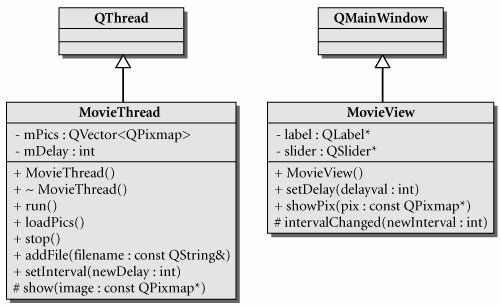Qt Signals And Slots Across Processes
As the standard for KDE desktop environment, Trolltech's Qt is a necessary basis for all programmers who want to develop cross-platform applications on Windows, Mac OS, Linux, and FreeBSD. A - Selection from Foundations of Qt Development Book. 2 days ago Qt Features. Explore the features of the latest Qt release to see which development platforms, operating systems and coding languages are supported, as well as how Qt features and functionality are licensed and packaged. Qt is indeed a C library/framework/header files. It is augmented by a macro processor (moc) which enables signals and slots, among many other things. It transforms additional macro commands (such as QOBJECT) so that classes have introspection and all sorts of other goodies that you might think of as adding Objective-C functionality to C.
Target Audience: Qt developers wishing to integrate 3d technology in their application.
Prerequisites: The audience is expected to have familiarity with basic QtQuick and OpenGL concepts, but no in-depth knowledge of them is required.

Description
Starting with the utility and enabler classes (for OpenGL, Vulkan and the upcoming Metal support), we will look at low level support for using OpenGL with QOpenGLWindow for rendering and event handling. We will also look at the support in the Widgets module.

Later we will show the technologies available in Qt that allow deep integration of Qt Quick 2 scenes with custom drawn OpenGL content. We will discuss the possibility of simply providing a Qt Quick overlay for an OpenGL scene. The discussion will then proceed to the creation of custom Qt Quick Items drawn using raw OpenGL commands, which can then be used from QML. We will also illustrate how to manually drive Qt Quick’s own rendering if we need to be in complete control of how and when the rendering happens.
Finally, we will look at Qt 3D and how to use its scene graphs and frame graphs to create high performance 3d rendering without requiring the specialist knowledge required when accessing OpenGL directly. Along the way we will introduce the Qt 3D renderer and input systems and how they are built on top of a flexible, highly threaded, Entity Component System (ECS) architecture that scales very well and is ripe for future additions.
You will learn how:
- to create windows for 3D rendering
- to add a Qt Quick based UI to an OpenGL application
- to create custom, high-performance Qt Quick Items using OpenGL
- to integrate your own OpenGL renderer with the Qt Quick Renderer
- to construct a basic Qt 3D application
- to make a scene graph, display 3D graphical content using geometry, materials, textures
- Qt 3D maps onto the graphics pipeline
- to extend Qt 3D to use your own custom geometry
- to write custom materials and shaders
- to completely control the Qt 3D renderer dynamically at runtime using the Frame Graph
Qt Debug Signal And Slot
Qt Signals And Slots Tutorial
Trainer: James Turner, KDAB
Senior Software Engineer and team lead at KDAB, James has been developing with Qt since 2002. He contributes to the current maintenance of Mac platform support as well as the development of OpenGL and 3D support in Qt. James has a background in user-interface, graphics and simulation development as well as a long history of development on OS-X and prior versions of Mac OS. He is a lead developer on FlightGear, the open-source flight simulator, and holds a BSc in Computer Science.